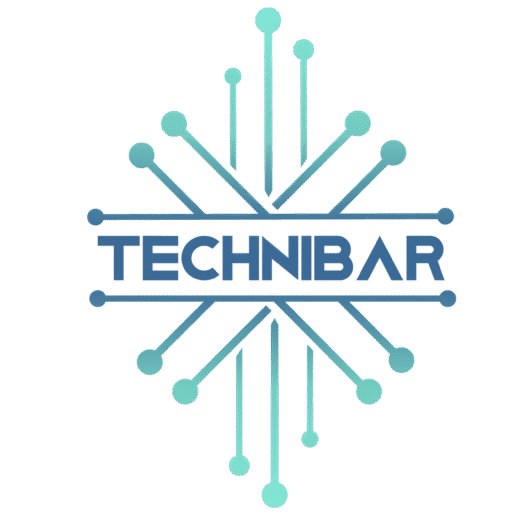In the modern digital-driven environment, software seems to be the core of innovation, business processes, and personal comfort. Software drives virtually everything around us including mobile apps that we use on a daily basis as well as enterprise systems that run businesses and industries around the globe. The software development process, which entails creation of such systems, is never about composing code. It is a strategic approach to the mix of problem-solving, planning, design, testing, and maintenance to deploy digital products that address actual day needs.
So what is Software?
Software refers to a set of instructions, information and computer programs that make computers and other electronic devices to accomplish a particular task. In contrast to hardware, which you are able to touch, the software is intangible. It works behind the scenes: it tells machines what to do and how to operate.
Classes of software:
Software Programs These include operating systems (windows, Linux, Mac), device drivers and a set of utility programs that manage hardware functions.
Application Software These are programs designed to be used by the final users, e.g. Word processors, browsers and mobile software.
Programming Software Programming tools and compilers that help a programmer to develop new applications.
Middleware A software that acts as a mediator between applications and operating systems to permit interaction between diverse systems.
What is Software Development?
Software development refers to the process of developing the concept, construction, testing and deploying of the applications and systems. In the nutshell, it implies taking a business need/a concept and turning it into an effective and stable product. Development may be as portable as a mobile application or as industrial as ERP systems or cloud-based applications.
The SDLC
DLC is the process according to which software creation is carried. Normal stages are:
- Requirement Analysis Analyzing needs of the client or user and what the system is supposed to achieve.
- Planning Defining the scope of the project, resources, timeline, and budget of the project.
- System architecture user interfaces, and technical specifications Designing All the diagrams, specifications and documentation in use.
- Development Coding in appropriate development languages and frameworks.
- Development Code Business in proper programming languages and frameworks.
- Testing This involves verification of the software to make sure that it is error free, bug free and vulnerable free.
Deployment-actual delivery of the final products to the users.
Maintenance Keeping it up to date, improving and handling bugs post release
Common Software Development Techniques
The decision on the methodology influences the kind of cooperation, delivery, and enhancements of the products by teams.
Waterfall Model Liner model with identifiable stages. Administers small fixed requirement projects.
Agile Development Emphasizes iterate development, teamwork and adaptability. widely applied on the current projects.
Scrum An Agile system that splits up work into shorter sprints to deliver more quickly.
DevOps Combines design and IT operation to make sure that it is quick to deliver and continuously deliver.
Lean Development Focuses on economy, reduction of waste and the maximization of good to users.
Software Development Programming Languages
Developers will deploy a full range of languages, depending on the nature of the undertaking.
Python General purposes, AI, machine learning, web application.
- JavaScript Web development, front-end frameworks.
- Java Applied in applications in the enterprise world, Android, and financial software.
- C++ Versatile language for system programming and performance sensitive application development.
- PHP The standard choice of web-based applications.
- C- commonly used in windows applications, game development, enterprise systems.
Evolutionary Method of Software Development.
Blockchain Development Smart contract, secured and distributed apps in the spheres of finance, supply chain, and digital identity.
IoT or Internet of Things Software that interlinks the devices, be it the smart homes or industrial systems.
Challenges in software development
Although the possibilities in software development are boundless, software development has its challenge:
- Unstable needs Customers may alter the needs in between the project.
- Time and Budget constraints, harsh schedules and short resources affect the quality.
- Security Risks the cyberattack defence process is a never-ending battle
- Complexity in Integration Continuity with the present systems.
Talent shortage Skilled developers are in short supply around the world.
The Significance of Software in Contemporary life
The concept of software development is what is leading digital transformation in industries
Healthcare EHR systems telemed apps and AI-based diagnostics.
Finance Mobile banking finance technology and blockchain transactions.
Education Online training and distance learning.
E-commerce Shopping apps, personal shopping.
Transportation Uber GPS and Autonomous cars.
Easy Software Development in the Future
Even the following decade holds promises of more breakthroughs
AI-Assisted Development AI Assistance tools that write or optimize code.
Quantum Computing Possibilities of transforming data processing as well as converting hard problems.
5G & Edge Computing Faster more resilient apps with real time.
Sustainable Development Developing energy efficient software to help develop a green environment.
Conclusion
Software and development run the framework of the digital world. Software is what dictates the way an individual, organization or society operates, whether it be the powering of your favorite mobile app or even driving a large scale enterprise. With the advent of new technologies, such as AI, blockchain, cloud, the sphere of software development will only grow bigger and present endless opportunities. Companies that invest in quality software end up not only improving efficiency but keep them competitive in the current dynamic market. To adhere to innovation, developers must familiarize themselves with new ideas and tools and become innovators as well.
FAQs
1. What is the development of software?
Software development refers to the process of the design, code, test, and maintenance of a package or system to perform tasks/solve a problem. It engages a number of stages, including volition analysis, planning, construction, progress, testing, and implementation.
2. Which are the major types of software?
Primary classifications of software are:
- Software serving/assisting people in their daily work (database, smart card reader)
- Application Software (Laptop apps, web browsers, productivity)
- Programming Software (IDEs, compilers)
- Middle wares (tools to connect systems with each other)
3. What programming languages are currently used most in software development?
Python, Java, JavaScript, C++, PHP, and C are some of my most favorite programming languages. They are applied to different purposes with languages being used to develop web, mobile application, AI, or enterprise systems.
4. What are the most challenging in software development?
Developers incur the problems of modifications in requirements, limited budgets, insecurity threats, software integration, and dearth of talent.
5. What is coming next in software development?
coding with AI, quantum computing, 5G, cloud-native apps, sustainable software design are where software is going. Such innovations will give software a better intelligence, faster and safer use.








